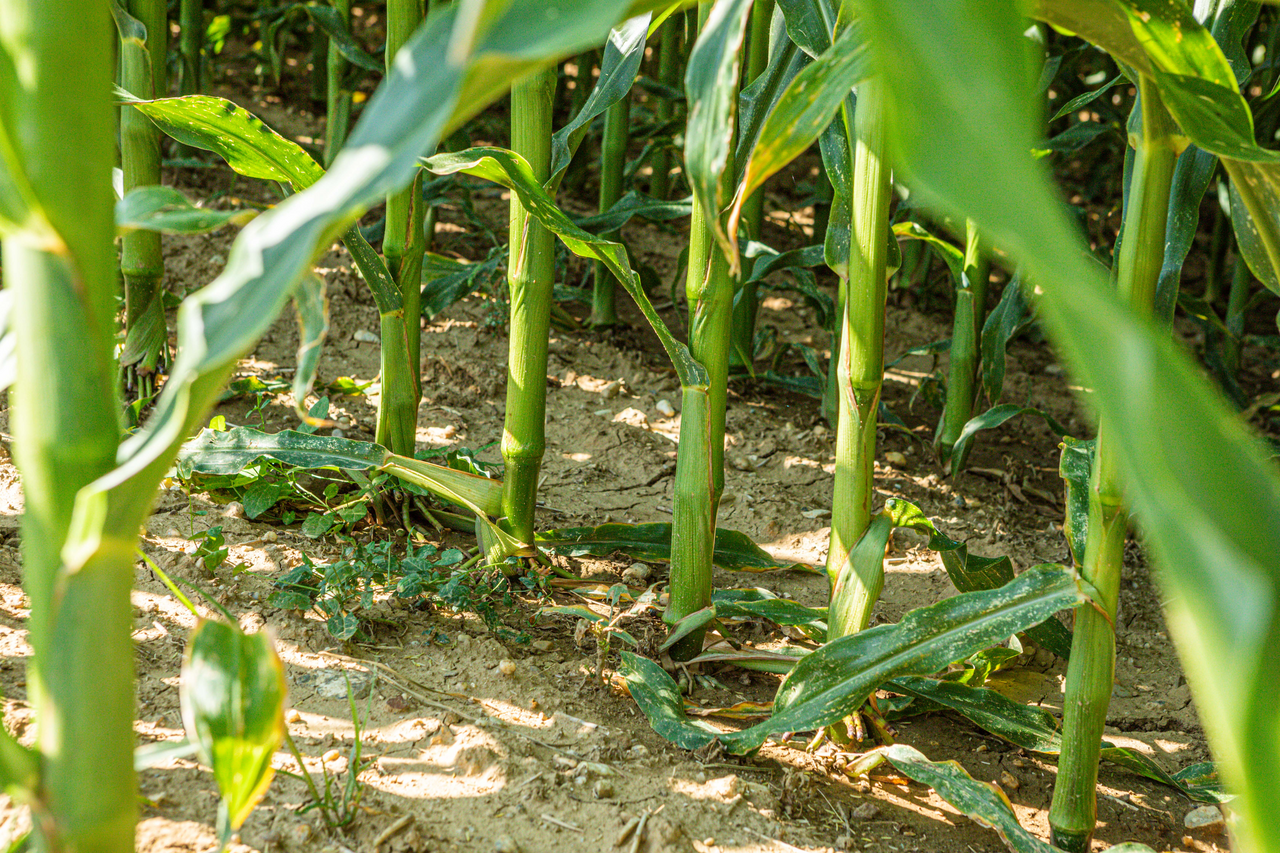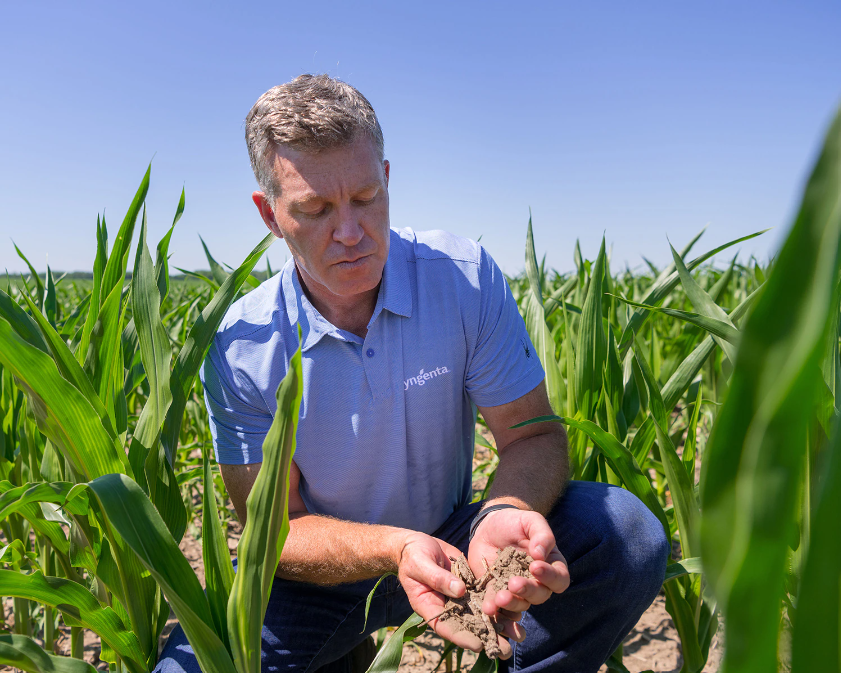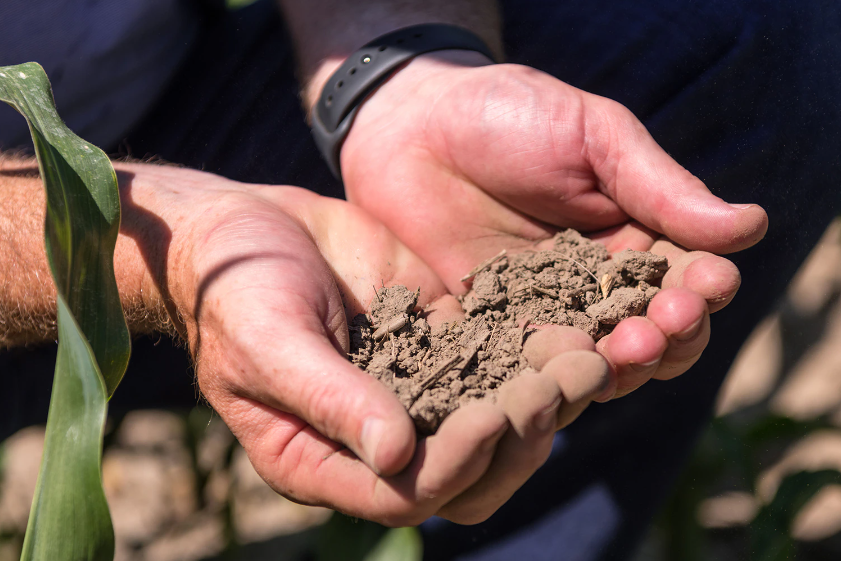Project ‘Bin Buster’ engages digital tools to improve soil health

The health of farm soil has many vital signs. Texture, density, water-holding capacity, respiration, pH and even the presence of earthworms — all are data points that might be taken from a handful of soil.
A multi-year project underway by Syngenta Group is evaluating those metrics and others in an effort to monitor, measure and analyze soil health on hundreds of farm acres in the midwestern United States. And though an experienced farmer can learn a lot from the look and feel of soil, the Syngenta project is using digital technology and data science to provide deeper insights that can help ensure the long-term viability and sustainability of farmland.
The objective of the project, called Bin Buster, is to establish a soil health baseline that growers can use to make decisions on seed selection, crop protection, nutrients, yield and profitability, while providing visibility into the relative health of the land from season to season. It’s all in keeping with Syngenta’s emphasis on regenerative agriculture.
“Bin Buster is a combination of innovation, digital technologies and sustainability practices,” says Jeff Rowe, who was recently promoted to global president of Syngenta Crop Protection, after serving as president of Syngenta Seeds. Rowe is also a fifth-generation farmer whose family farm in north central Illinois is one of the testing grounds for the Bin Buster project.
“There’s so much going on in a field biologically that no human being can possibly process it all,” says Rowe. “We’re looking at how much digital technology and digital sensing can help inform us.”
The project seeks to advance and bring new insights to sustainable farming practices, including conservation tillage, cover crops, seed selection, and optimal use of fertilizers and crop protection.
Launched in 2019, Bin Buster initially focused on fine tuning the amounts of nitrogen and fungicide used on corn to determine how increasing or decreasing the application of those products affects crop yield.
That’s where Bin Buster gets its name — from the notion of a grain bin bursting at the seams from an unusually robust harvest. In theory, the digital technologies being put to use on the farms will lead to an increase in production. And that’s exactly what happened. Corn seeds identified by Syngenta’s Seed Selector algorithm — which were determined based on field characteristics — outperformed randomly selected corn seeds by as much as six bushels per acre across the entire corn portfolio.
Bin Buster objectives
As the project matures, Bin Buster now focuses on measuring and promoting soil health. Its objectives include:
- Establishing a soil health baseline
- Assessing data requirements and digital technologies
- Evaluating the role of soil genome sequencing
- Monitoring and modeling diseases
- Determining optimum nitrogen and fungicide rates
Soil will be tested at intervals throughout the project to gauge progress and changing conditions. Most recently, soil samples were taken on two of the participating farms — the Rowe family farm and Syngenta’s Farm of the Future in Ottawa, Illinois.
Soil health and regenerative agriculture
What is healthy soil?
Soil is an ever-changing ecosystem of carbon, nutrients, microorganisms and moisture. Farmers can keep that ecosystem in balance by adding soil-building components like compost, manure and nutrients, and through regenerative agriculture practices, including cover crops and the various forms of conservation tillage, which include no-till, low-till and precise strip tillage.
The ultimate measure of soil quality is soil’s ability to support plant and animal life, according to the U.S. Department of Agriculture. Soil also is essential to environmental sustainability, contributing to air and water quality, biodiversity and plant health.
And soil has a vital role to play in agriculture’s response to climate change. Carbon sequestration takes place in soil, as carbon dioxide is removed from the atmosphere through photosynthesis and stored in the ground.
Besides the environmental benefits, though, there’s a compelling business case for soil health management. Healthy soil’s benefits include water conservation, more efficient and cost-effective use of nutrients, and higher yields for farmers.
Components of soil-health management include crop rotation, cover crops, and nutrient and pest management. And conservation tillage contributes by leaving some crop residue on the ground to minimize soil erosion and retain moisture.
The USDA advocates four principles of soil health:
- Keep soil covered as much as possible
- Minimize the degree to which soil is disturbed
- Grow plants year-round to nourish the soil
- Grow a variety of plants
Measuring soil health
Syngenta supports soil health management through several programs, which outline commitments to reduce agriculture’s carbon footprint and help farmers cope with extreme weather related to climate change.
Bin Buster’s unique contribution to these far-reaching initiatives is to determine the data requirements for measuring soil health on working farms using the latest digital technologies.
The project aims eventually to use the information gleaned from the soil to provide practical recommendations to farmers during the growing season via Syngenta’s Cropwise digital farming platform.
“The idea is that a grower would have a dashboard with all the information we're collecting on the farm,” says Bill McDonnell, Syngenta’s digital solutions lead. “It would say, ‘Here's what we think you should consider doing.’”
The suggested actions might include adjusting the application of fertilizer or fungicide, responding to pest pressure, or controlling weeds on a farm’s perimeter.
A range of Syngenta products — including Golden Harvest seed, Acuron herbicide, Miravis fungicide, Warrior insecticide and YieldOn biostimulant — are being used in Bin Buster to demonstrate how they work in support of healthier soil and higher yields. Two of the fields in northern Illinois have used autumn-planted cover crops as next steps in regenerative agriculture.
Soil-monitoring technologies
The technologies being employed for data collection include ground-level sensors; soil-moisture probes; spore cameras and collection units; pest-monitoring and identification devices; weather stations; and high-resolution imaging.
Soil samples are being tested at three labs. Baseline metrics will be established by Cornell University’s Soil Health Lab using its Comprehensive Assessment of Soil Health (CASH) — an industry benchmark for soil nutrient analysis and biological and physical characteristics.
In addition, two soil-testing companies, Molecular Research LP and Pattern Ag, will conduct microbial and fungal analyses.
The field-level data is then entered into Syngenta’s Cropwise farm management software and shared with other data platforms to provide baseline sustainability metrics on greenhouse gas emissions, energy use efficiency, soil carbon and more.
Those metrics will help gauge the progress of soil-health management over months and years. “As we move forward and take additional samples, we should see a difference in the soil organic carbon, as well as organic matter,” says McDonnell.
Over time, healthier soil should mean plants that are more resilient and more resistant to disease and drought. “Soil health,” Rowe says, “is the base for almost everything in agriculture.”

Global President of Syngenta Crop Protection, Jeff Rowe checks the soil on this farm during the growing season in north central Illinois. Credit: Anthony Collins for Syngenta
Global President of Syngenta Crop Protection, Jeff Rowe checks the soil on this farm during the growing season in north central Illinois. Credit: Anthony Collins for Syngenta

Syngenta's Bin Buster project aims to establish a soil-health baseline by monitoring and measuring soil on farms in the U.S. corn belt. Credit: Sean Ostruszka for Syngenta
Syngenta's Bin Buster project aims to establish a soil-health baseline by monitoring and measuring soil on farms in the U.S. corn belt. Credit: Sean Ostruszka for Syngenta

Crop residue mixes with soil to minimize erosion and provide other benefits. Credit: Anthony Collins for Syngenta
Crop residue mixes with soil to minimize erosion and provide other benefits. Credit: Anthony Collins for Syngenta

